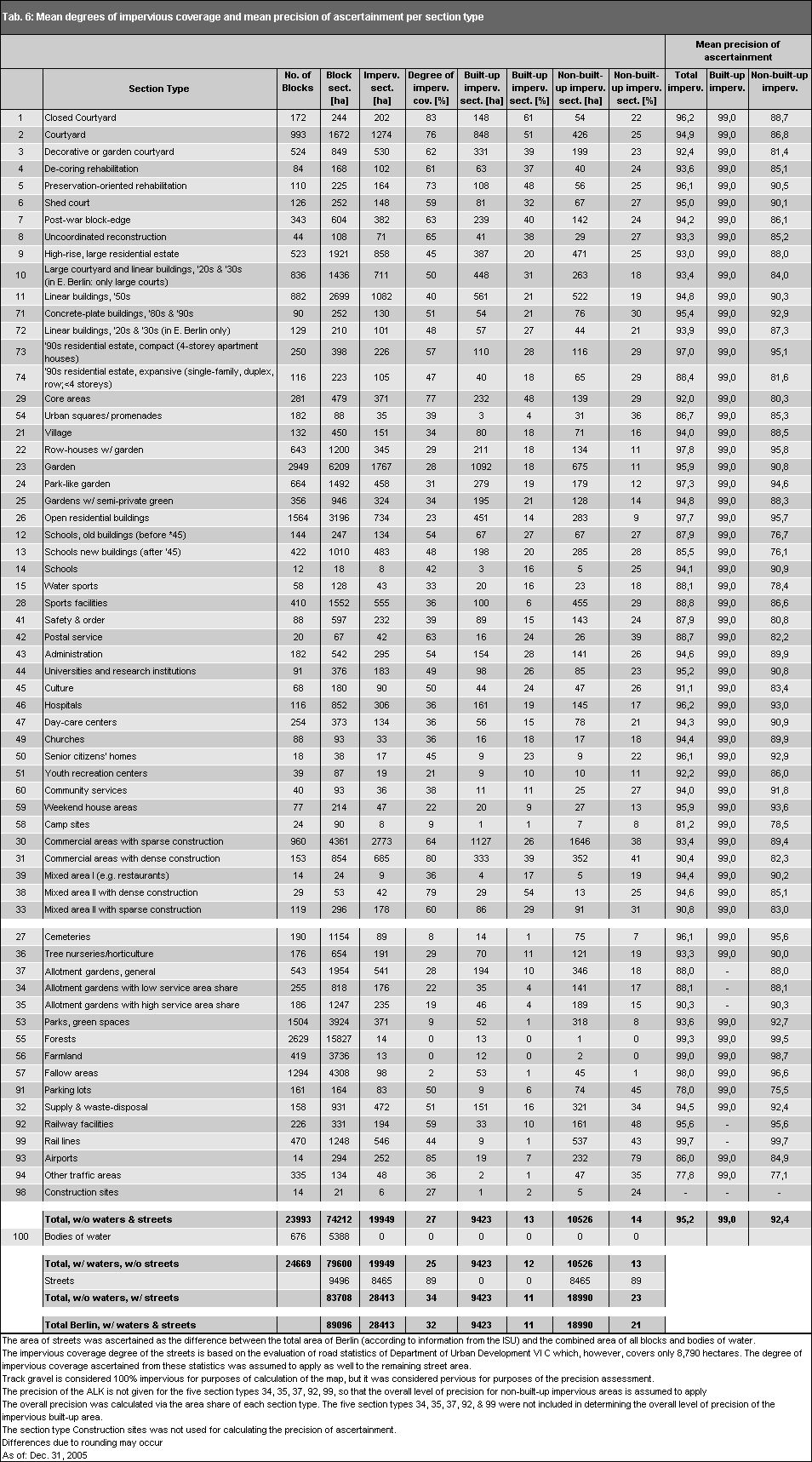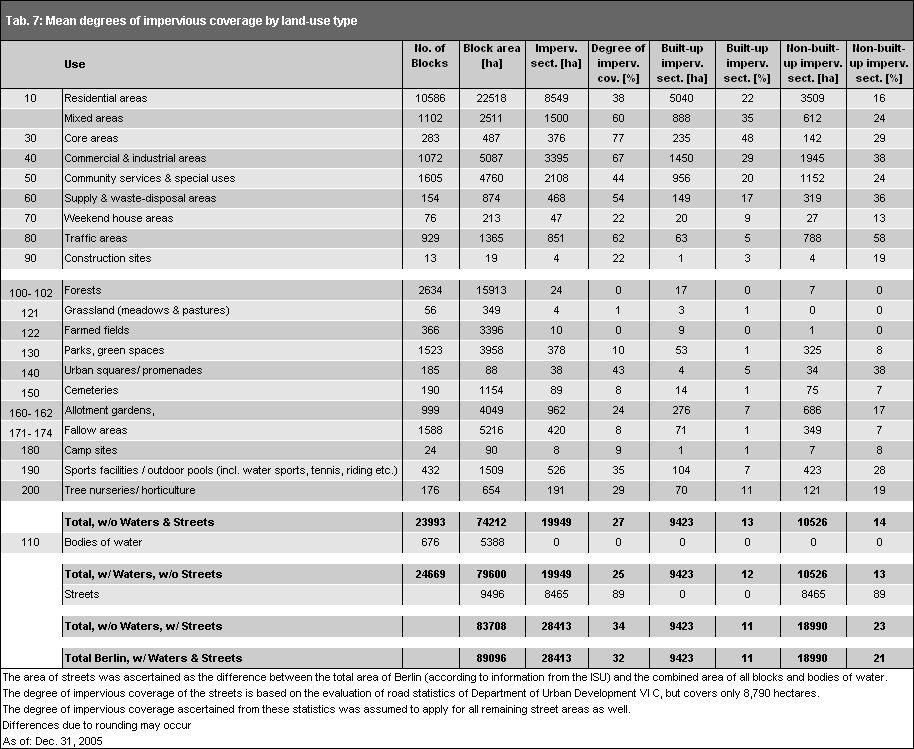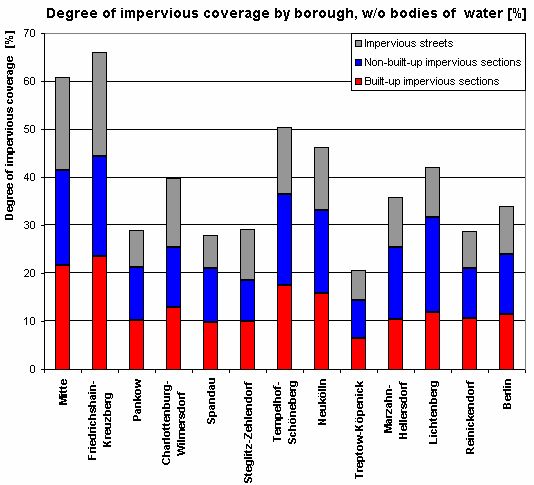In the map, the degree of impervious coverage, i.e. the coverage of the earth’s surface with impermeable materials, is represented in percent of the reference area (statistical block or block segment). Generally, the degree of impervious coverage declines from the center toward the outskirts, since the building structure toward the outskirts is less dense, and the outskirts areas are either completely undeveloped (forest or farmland), or characterized by detached homes. The exceptions to this are the traditional centers of boroughs like Spandau and Köpenick, which were separate cities prior to 1920. There, impervious coverage degree is about 60 %, and more than 90 % in their core areas. The large new development areas at the outskirts, such as Marzahn, Hellersdorf and Hohenschönhausen, or Gropiusstadt in Neukölln and the “Thermometer Estate” in Lichterfelde, are between 50 % and over 80 % impervious.
The following table shows the average degrees of impervious coverage and the mean precision levels per section type.
The highest overall degrees of impervious coverage are shown for the section types “Closed Courtyard” with 83 %, and “Airport” with 86 %. The lowest degrees of impervious coverage, with 0 % each, are listed for the section types “Forest” and “Farmland.”




